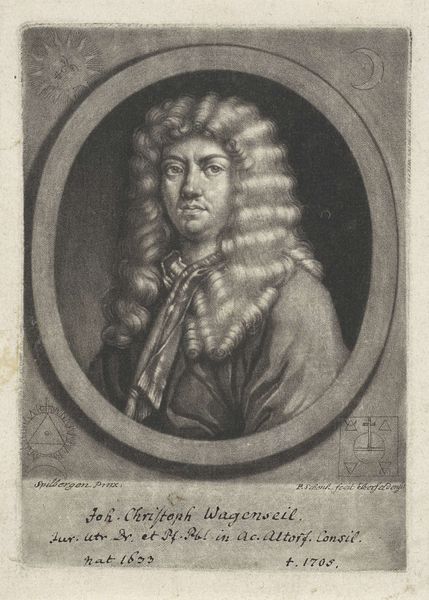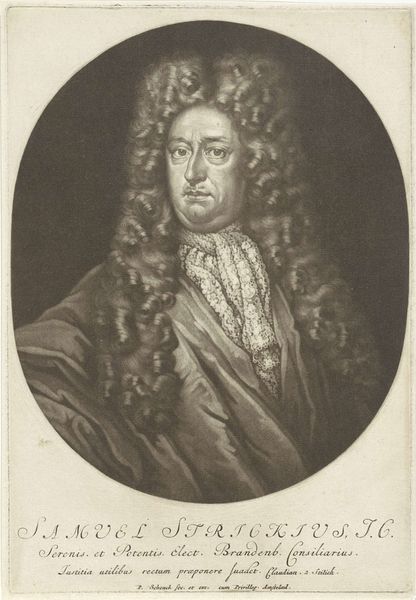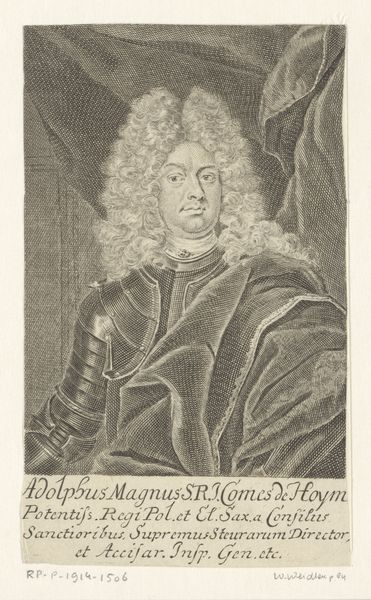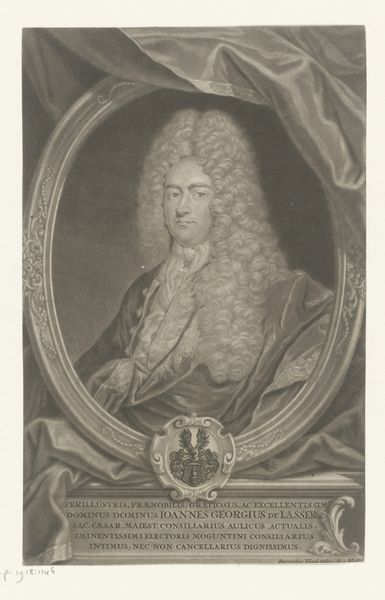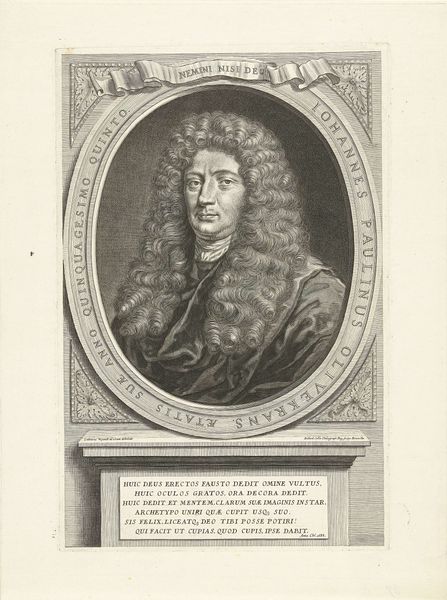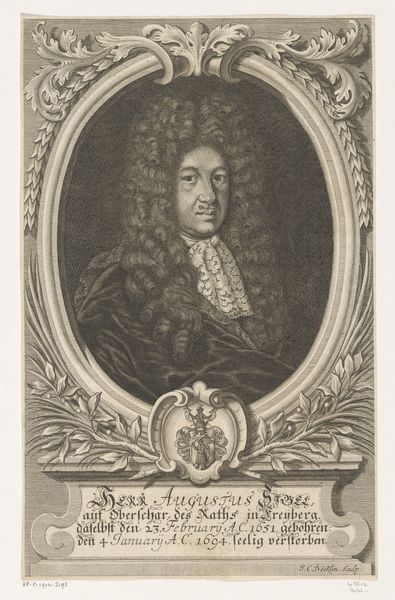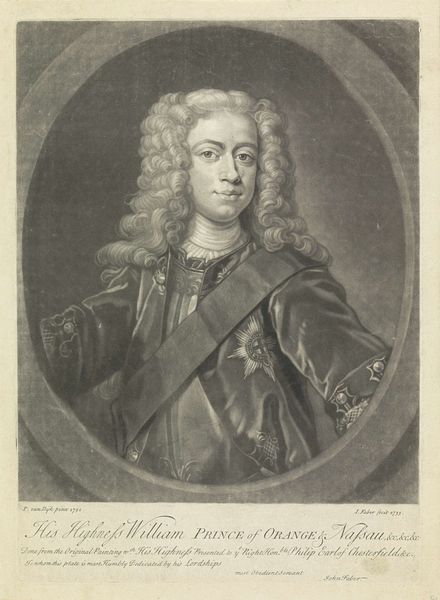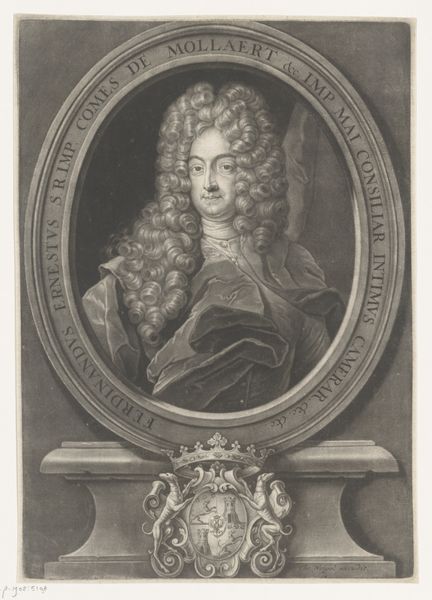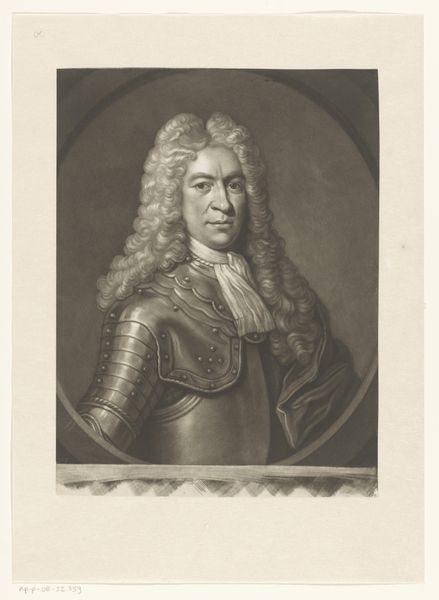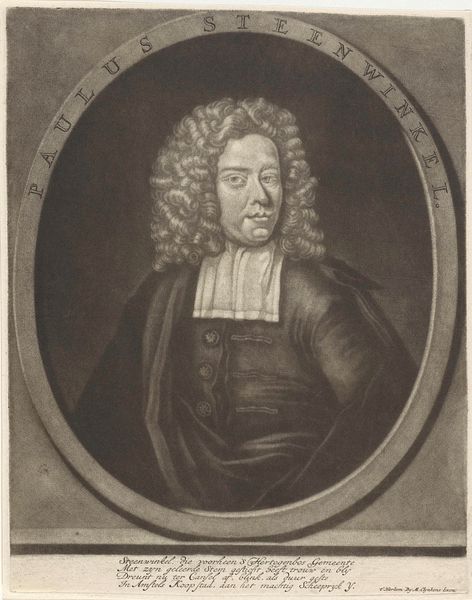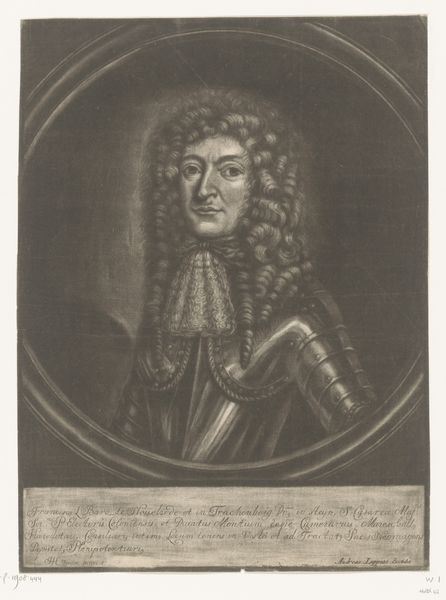
print, engraving
#
portrait
#
baroque
#
dutch-golden-age
# print
#
portrait reference
#
group-portraits
#
portrait drawing
#
history-painting
#
academic-art
#
engraving
Dimensions: height 250 mm, width 188 mm
Copyright: Rijks Museum: Open Domain
Editor: Here we have a portrait print of Jan van Beuningen, dating roughly from 1714 to 1759. It’s an engraving, and I’m immediately struck by how it reflects the wealth and status of the subject. How should we interpret this piece within its historical context? Curator: That's a keen observation! We can read portraits like this as carefully constructed pieces of propaganda. The trappings of wealth, as you noted, but also the way he's framed, literally, within this oval containing an inscription related to his Directorship of the Dutch East India Company – what does that tell us? Editor: It suggests his identity was intrinsically linked to his role within the VOC. His status wasn’t just personal, it was institutional. The engraving almost makes him seem like an emblem of the company. Curator: Precisely. And consider the proliferation of such portraits during the Dutch Golden Age. They served as powerful visual statements of civic pride and commercial dominance. Who had access to this image? Where would it have been displayed and how would its accessibility and placement reinforce the status quo? Editor: I imagine these prints circulated among the elite. Perhaps displayed in guild halls or private collections, further solidifying the power structures of the time. Were there criticisms of these representations? Curator: Absolutely! Even amidst the celebratory imagery, there were dissenting voices questioning the VOC's exploitative practices. Think about the ethical implications of this "Golden Age" fueled by colonialism. Where are the images depicting the reality for the exploited people affected by Van Beuningen's society? Editor: It’s fascinating to consider the layers of power and representation embedded in this seemingly straightforward portrait. Thanks, that definitely helps put it into a broader context. Curator: Indeed. By interrogating these images, we gain a deeper understanding of the complex social and political dynamics that shaped the Dutch Golden Age, and still influence the legacies that follow.
Comments
No comments
Be the first to comment and join the conversation on the ultimate creative platform.
